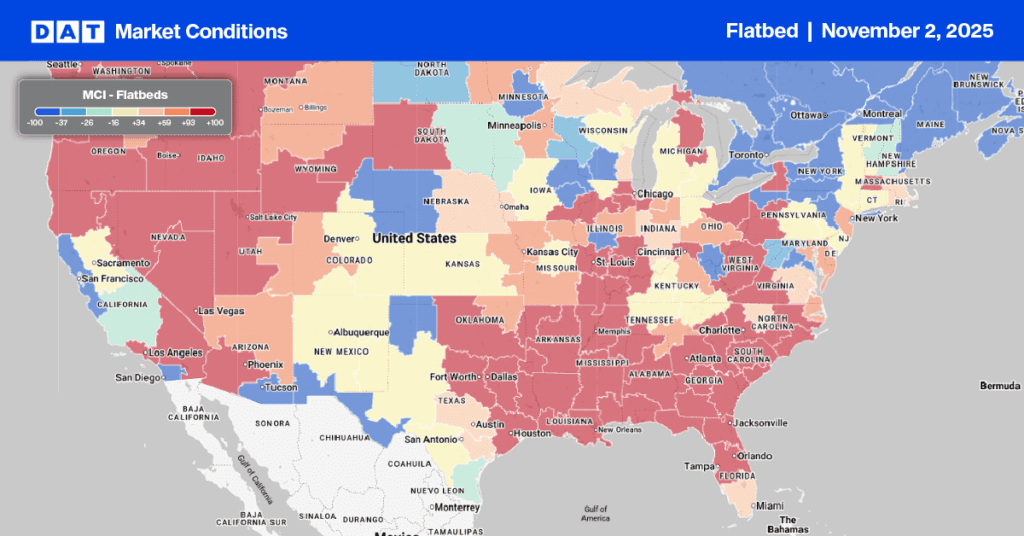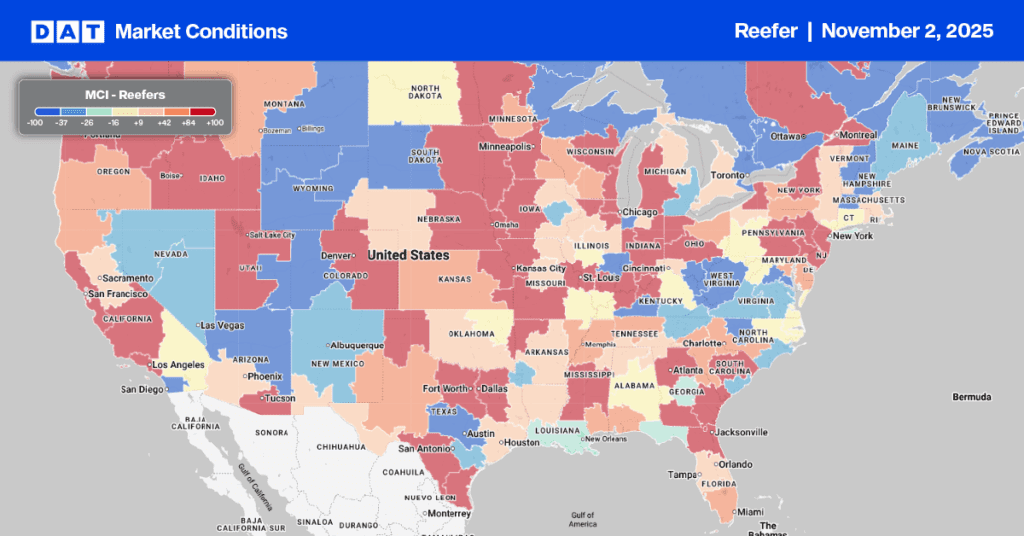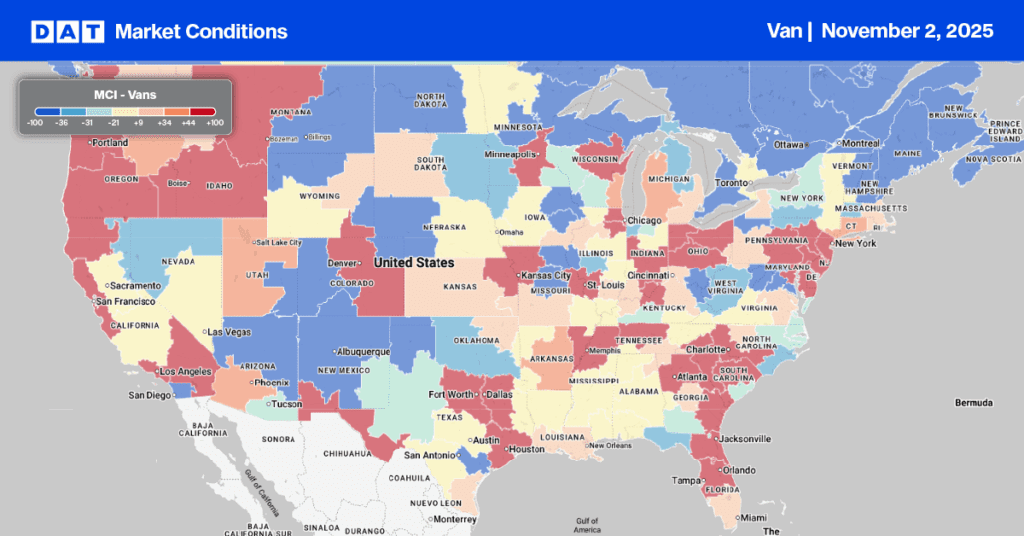On a recent DAT Freight & Analytics iQ show, Tim Denoyer, Vice President and Senior Analyst at ACT Research, discussed the economic outlook for trucking in 2023. Here’s part of the interview with Ken Adamo, Chief of Analytics, and Dean Croke, Principal Market Analyst.
Dean Croke: Let’s start with inflation, Tim. Following record highs this year, what do you see happening in 2023?
Tim Denoyer: The most optimistic economic policy will be picked up in 2023, which is disinflation, so we had a little bit of a more reasonable inflation rate here in November that was, I think, we’re still around 7% in terms of overall year over year change in the Consumer Price Index (CPI). That leads to slower inflation, which is really constructive, although our baseline forecast is for a recession. We think the next few quarters are going to be pretty choppy.
Ken Adamo: We’ve had some pretty big numbers come out in the last couple of weeks; order books are open for new trucks and trailers. How do we make sense of those numbers against some easy comps?
Tim Denoyer: This is one of the reasons that ACT and DAT work together. It’s because the DAT dry van spot rate tends to lead to equipment ordering. There’s a very tight relationship between what’s happening in the spot market, how people feel about their businesses, and what they’re planning on doing with equipment. Knowing what’s happening with new truck orders will help us forecast the equipment production and understand the market’s supply side.
So that long-term relationship (between spot rates and orders), which was pretty good for the pre-pandemic decade, broke down because of the supply chain crisis that many manufacturers just couldn’t be taking orders essentially back sort of around the end of 2021. Now that supply chain disruptions are easing, build rates are starting to pick up. We’re seeing the manufacturers more willing to accept orders for vehicles and a lot of pent-up demand.
Dean Croke: What does the backlog look like, and how long do equipment manufacturers take to build and deliver trucks?
Tim Denoyer: We’ve got about 160,000 Class-8 tractors in backlog at the moment that has been ordered but not yet built, and at the current build rate, that’s going to take about nine months. And then it’s probably worth talking about used truck prices, which is another important data set that we produce based on truck price data from roughly 900 rooftops around the country. We’ve gone from a range of $40,000 to $75,000 over the past decade to selling points of $130,000 in the last year. These typically are vehicles with three or four hundred thousand miles on them.
Ken Adamo: Regarding the economic outlook question, what’s truckload demand look like as we end 2022?
Tim Denoyer: Let’s start with the Cass Shipments Index, which is a very broad trucking from a mix of truckload shipments (80%) plus LTL, intermodal, and some rail volumes in here as well as some liquid tank volumes. The November numbers were 0.4% lower year over year, suggesting a pretty stable freight environment. We saw some decent increases for a few months, and we’re now seeing some of the payback from that, I think, and there’s gonna be some softness here in the forecast as the other declines in imports. The destocking of inventories plays through as we get through this sort of rough patch economically. We think that we’ll be in recovery mode by the back half of next year.
Data from carriers in the LTL sector has been surprising for the last two months. It’s literally been decimated. LTL volumes are down 10% yearly, so there’s not quite as much tension in the supply chain. Shippers can ship less air and more full truckloads instead of LTL, so shipments are left to consolidate into the lower-cost truckload mode.
Dean Croke: Can you speak to one of the other data points that were a feature of past freight cycles, and that’s order cancellations?
Tim Denoyer: It’s something we watch very closely every month and but it’s really negligible at the moment. The reason is that there’s so much pent-up demand for trucks; if a carrier has an order slot, they’re not giving them up.
The full interview can be found here.


